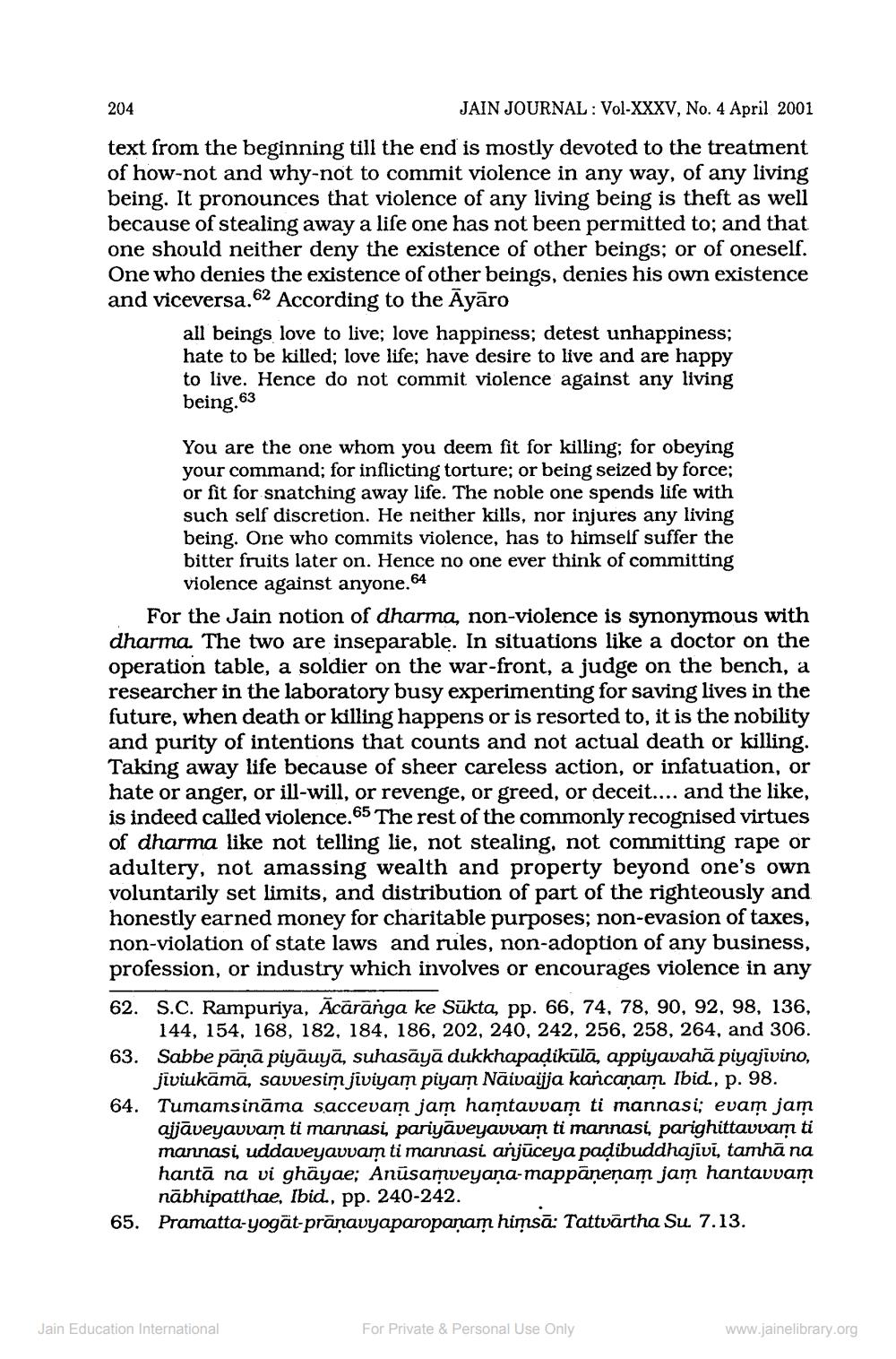________________
204
JAIN JOURNAL: Vol-XXXV, No. 4 April 2001
text from the beginning till the end is mostly devoted to the treatment of how-not and why-not to commit violence in any way, of any living being. It pronounces that violence of any living being is theft as well because of stealing away a life one has not been permitted to; and that one should neither deny the existence of other beings; or of oneself. One who denies the existence of other beings, denies his own existence and viceversa. 62 According to the Ayāro
all beings love to live; love happiness; detest unhappiness; hate to be killed; love life; have desire to live and are happy to live. Hence do not commit violence against any living being. 63
You are the one whom you deem fit for killing; for obeying your command; for inflicting torture; or being seized by force; or fit for snatching away life. The noble one spends life with such self discretion. He neither kills, nor injures any living being. One who commits violence, has to himself suffer the bitter fruits later on. Hence no one ever think of committing
violence against anyone.64 For the Jain notion of dharma, non-violence is synonymous with dharma. The two are inseparable. In situations like a doctor on the operation table, a soldier on the war-front, a judge on the bench, a researcher in the laboratory busy experimenting for saving lives in the future, when death or killing happens or is resorted to, it is the nobility and purity of intentions that counts and not actual death or killing. Taking away life because of sheer careless action, or infatuation, or hate or anger, or ill-will, or revenge, or greed, or deceit.... and the like, is indeed called violence.65 The rest of the commonly recognised virtues of dharma like not telling lie, not stealing, not committing rape or adultery, not amassing wealth and property beyond one's own voluntarily set limits, and distribution of part of the righteously and honestly earned money for charitable purposes; non-evasion of taxes, non-violation of state laws and rules, non-adoption of any business, profession, or industry which involves or encourages violence in any 62. S.C. Rampuriya, Ācāränga ke Sukta, pp. 66, 74, 78, 90, 92, 98, 136,
144, 154, 168, 182, 184, 186, 202, 240, 242, 256, 258, 264, and 306. 63. Sabbe pānā piyāuyā, suhasāyā dukkhapadikulā, appiyavahā piyajivino,
jiviukāmā, savvesim jiviyam piyam Nãivaijja kancanam. Ibid., p. 98. 64. Tumamsināma saccevam jam hamtavvam ti mannasi; evam jam
ajjāveyavvam ti mannasi, pariyāveyavvam ti mannasi parighittavvam ti mannasi, uddaveyavvam ti mannasi anjūceya padibuddhajīvi, tamhā na hantā na vi ghāyae; Anūsamveyaņa-mappaņenam jam hantavvam
nābhipatthae, Ibid., pp. 240-242. 65. Pramatta-yogät-prāņavyaparopaņam himsā: Tattvārtha Su 7.13.
Jain Education International
For Private & Personal Use Only
www.jainelibrary.org




